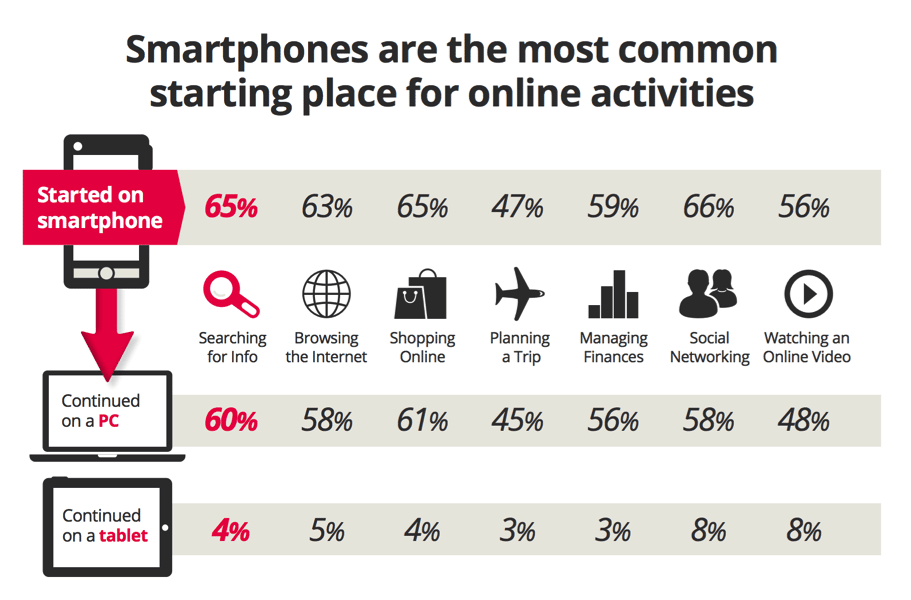Current State of School Websites — An Interview with Peter Baron
 WhippleHill and Blackbaud recently published an e-Book showcasing their research on “Enhancing Web Navigation and the Rise of Responsive Design.” You can download the e-Book by clicking here. This is a great resource for reviewing the current state of private, independent and faith-based school websites.
WhippleHill and Blackbaud recently published an e-Book showcasing their research on “Enhancing Web Navigation and the Rise of Responsive Design.” You can download the e-Book by clicking here. This is a great resource for reviewing the current state of private, independent and faith-based school websites.
Peter Baron is the Senior Product Marketing Manager at Blackbaud’s K12 Group. Recently, I had the opportunity to ask him some questions about the findings and implications of the research in this e-Book.
Can you begin by sharing with us your background and role with WhippleHill and Blackbaud?
“Sure, happy to share. I’m the Senior Product Marketing Manager for Blackbaud’s K12 Private Schools Group. In that role, I work to share how our products can help to connect the whole school. I do that in a variety of ways — from blogging to presenting at conferences to working directly with schools on special projects to industry reports (like the one noted above!).”
What does it mean for WhippleHill now that it is part of Blackbaud?
“For the 15 years that I’ve worked in and with schools, they’ve been searching for that elusive comprehensive solution to manage the whole school — enrollment, student information management, classroom collaboration, alumni engagement, financial management, web presence and more. It hasn’t existed for a number of reasons — from cost, to technical challenges, to it simply being a really difficult problem to solve.
What really gets me excited about being part of Blackbaud, is that we’ve got the answer given the depth of our product portfolio, and the way it has come together as a single solution.
By combining WhippleHill’s front office expertise with Blackbaud’s 30 years of experience in providing back office solutions to private schools, we’ve got a great foundation to build upon.
Naturally, you’ll see our approach evolve and grow over time, but the combination of the “ON” products with Raiser Edge, Financial Edge and Education Edge provides schools with an opportunity to connect their campus in a way that was never possible before. I see a really bright future ahead for Blackbaud.”
What were some of the most surprising findings from the research?
“Great question — a couple of things come to mind.
The responsive web design stat sure did jump out at me. When I first saw that 22% of schools offer responsive sites, I thought, “wow, there’s a lot of room to grow here.” But when I stepped back and considered the responsive web design was first coined in 2010 (and didn’t really take off until 2012), my thinking changed. Schools have moved pretty fast to adopt RWD, especially given the relative youth of the design approach. I think we’ll continue to see tremendous growth over the next couple of years.
The consistency of the segmented data also stood out. Going in, we fully expected to see variations, but the data showed that regardless of school type, religious affiliations, etc., the data was remarkably consistent for web navigation, calls to action, use of social media badges, and more. There were a couple of exceptions, but for the most part, the data didn’t vary too much.”
In your research you show that only 22% of the private schools reviewed use a responsive website. How important is it for schools to consider moving to a responsive format? What are the implications for a school if they don’t move in this direction?
“It’s incredibly important. I really can’t stress that enough.
Check out this 2012 stat from Google’s The New Multi-screen World: Understanding Cross-platform Consumer Behavior.

The data sheds light on the significance of a multi-screen, responsive approach. Pay special attention to the first column, it really jumps out — 65% of web surfers begin their search for information on their mobile device. That’s staggering.
When I first saw it, I thought, “no way is this possible.,” but then I considered how I search for information. So much of my personal web surfing begins on my iPhone. I may end up diving deeper on my laptop, but the initial connection, more often than not, begins with my mobile device.
Now, think about it from a prospective parent’s point of view. If they’re searching for schools on the web, and they land on your site and it’s not responsive, what kind of a impression are you leaving? Especially if your competitors offer a responsive website.
Take it one step further — what is the user experience like when a current family or alum logs into your site via their phone or tablet? Is it responsive? Are they able to get all the information that they need?
Access shouldn’t be limited to a sub-set of features just because someone’s browsing or logged into your site on a phone. Doing so is a missed opportunity.”
It was also surprising to me that 40% of schools do not use call-to-actions. This seems like a core strategy today. Do you feel that there are many schools who are missing the boat of using their website to its fullest potential?
“That’s one of the quick takeaways that really resonated with me. Whether it’s adding buttons to apply, request information, donate, whatever the case, I think schools will understand after reviewing the data that there’s an opportunity for them to drive more focused action based on their goals.”
In your review, what is your impression of the school websites in how well they are focused on marketing their school and telling their story?
“That’s a great question, Rick. Based on the report, it’s really hard to say — we spent most of our time looking at navigation placement, use of SEO and calls to action, etc.
That said, we did see that 77% of schools place a newsfeed on their home pages, and that 34% embed videos there too. These are indicators that schools are considering the value of telling their stories.
In a future version of the report, we’ll likely look more deeply at storytelling to be able to establish a clearer benchmark.”
What advice can you offer to a school leader today about their website, based on this research or your own experience?
“Boy, I could spend a long time answering this question, but I’ll focus on a couple of quick takeaways.
First, I encourage schools to take a long hard look at their site’s on-page SEO. The data told us that there’s a lot of room for improvement when it comes to using things like meta-descriptions and H1 tags. Fortunately, these sorts of things are correctable, but it does require a time commitment.
Second, we saw there’s a lot of room for schools to add social media badges to their websites. Understanding that social is critical to storytelling, I strongly encourage schools to get as many people into those channels (i.e. Facebook, Twitter, Instagram, Linkedin, Pinterest) as possible. Badges can help. I’d hate for any school to miss an opportunity to connect with a constituent because their badges weren’t part of their site navigation. It’s an easy fix.”
Peter, thank you for your work with schools and for this important research on websites. If you are interested in connecting with Peter, you can reach out to him at: pbaron@whipplehill.com. Also, don’t miss Peter’s webinar on February 5, where he will discussing the implications of this research in a more in-depth format.
